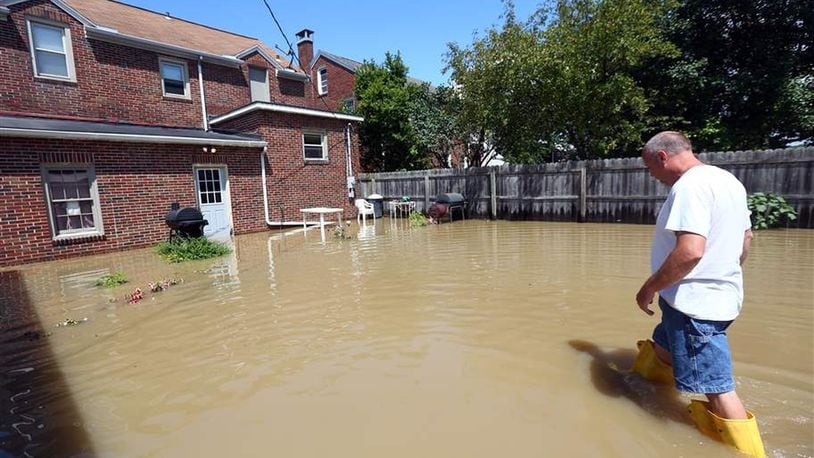The National Flood Insurance Program was established in 1968 in the aftermath of Hurricane Betsy and other disasters. As insurers fled the market or offered rates that were out of reach for many people, Congress saw a need for a program that would offer affordable insurance to those in flood-prone areas.
But nearly 50 years later, the program, which is administered by the Federal Emergency Management Agency, is about $25 billion in the hole, and that was before the flood of claims from this year’s hurricanes.
The basic problem, say critics, is the very premise of the program. It requires only those in areas of high risk to obtain the policies, thereby insuring only high-risk properties are in the pool. Critics say the program also lets people — sometimes very wealthy people — get away with building waterfront homes at high risk of flooding without having to pay the true price for assuming that risk.
And when premiums and surcharges don’t cover the claims and other costs from the program, taxpayers are on the hook.
“The program was designed to be dysfunctional,” said Diane Katz of the conservative Heritage Foundation. “Right from the start it was going to be a loser, because if you don’t have people paying for the risk that they face, then they’re going to take more risk. And when they do, it’s going to cost taxpayers more.”
The pool itself is also full of risk because those at lower risk of flooding largely avoid buying the product. A report by the Pew Charitable Trusts found that as of 2016, 14,000 properties in Florida had repeatedly flooded, only to be bailed out time and again by federal flood insurance.
Congress extended the program in early September as part of a short-term deal that also covered the federal budget and the debt ceiling, extending the program’s authorization through Dec. 8. But by the time that program expires, analysts say, Congress will have maxed out the $30.4 billion debt limit that the program now has.
“We don’t want taxpayers to subsidize people living in areas that are flood prone,” said Sen. Sherrod Brown, D-Ohio, who advocates better mapping on flood zones. “But we have to do that without jacking up people’s rates and making it unaffordable. It’s a tough line to walk.”
Brown said Congress wants to help those who have suffered a “terrible tragedy,” but “we shouldn’t subsidize other parts of the country so people can live in nice beachfront homes.”
‘We need affordable flood insurance’
Areas that rely on flood insurance say they need the product to survive.
“Where we’re from in south Louisiana it’s just too important for us economically,” said Caitlin Berni, vice president of policy and communications for Greater New Orleans Inc., a regional economic development organization for that city. “We need affordable flood insurance.”
She argues that the current program’s problems can be explained in one word: Katrina. In the aftermath of that storm and other 2005 hurricanes, the government had to borrow $17.5 billion to settle the claims.
But the flooding that ensued, she said, was caused by the failure of the city’s levee system, not chiefly because of the hurricane.
Federal flood insurance “was never designed to insure against the failure of federal infrastructure,” she said.
While the program largely benefits the Gulf states of Florida, Texas and Louisiana, Ohio had 34,328 flood policies in force statewide as of June 30.
FEMA records show 5,364 policies are in place in a nine-county area of southwest Ohio, which includes Montgomery, Clark and Butler counties. Those policies insure losses up to $968.3 million.
In all, Ohio’s policies insured about $6.3 billion worth of loss — far less than Florida’s $423 billion, Texas’ $161 billion, and Louisiana’s $125 billion.
According to Pew, Florida’s policies account for about 35 percent of the National Flood Insurance Policies that exist. Texas accounts for 12 percent while Louisiana accounts for 10 percent.
Rewarding risk?
The vast majority of U.S. homeowners go without flood insurance, particularly in this part of the country. According to a 2016 poll by the Insurance Information Institute, only eight percent of homeowners in Midwest have flood insurance.
Critics of the federal program say it rewards foolhardiness: If you know your property is in an area at high risk for floods, they say, the very least you can do is build in a way that take that into account.
“We keep rebuilding the same stuff in the same places in the same ways,” said Ethan Handelman, vice president of policy and advocacy for the National Housing Conference. “We’re not mitigating, not preparing for risks we know are coming.”
But for some, having flood insurance is the difference between being able to rebuild or having to walk away.
During the Baton Rouge floods of 2016, the average homeowner with flood insurance received $86,500, while those without it got $9,100 in federal disaster assistance, according to Steve Ellis, vice president of Taxpayers for Common Sense.
“If you do flood and you don’t have flood insurance, you’re in a really bad way,” he said.
IN-DEPTH COVERAGE
Our Washington Bureau chases the stories that impact you. For the latest in politics, like our Ohio Politics Facebook page and follow our team at @Ohio_Politics on Twitter.
About the Author
